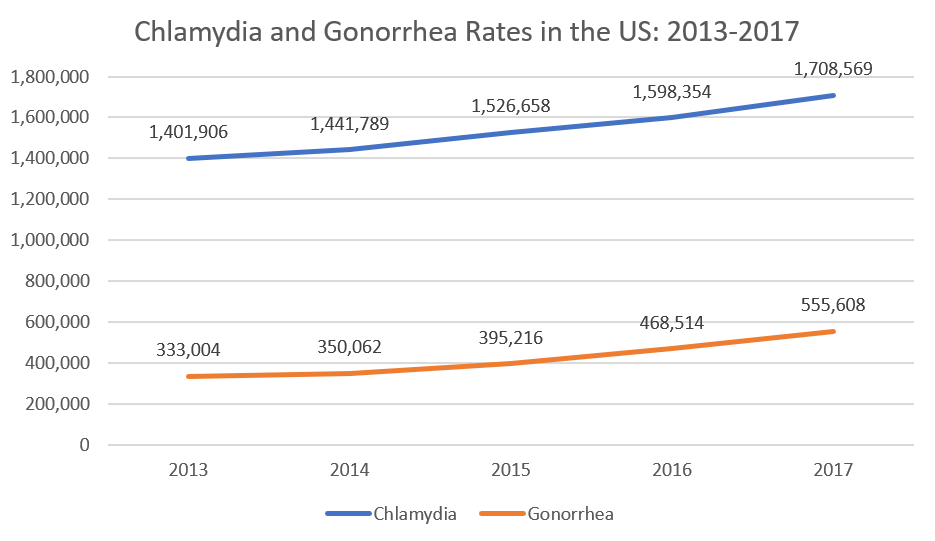Find a Clinic That’s Right for You
Find the STD testing facilities near you, so you can get peace of mind right away. Search through thousands of STD testing clinics using our FREE STD testing center locator. Simply click on your state, find your city or territory, and pick a location that works best for you. Can’t find your city? We suggest you find one from the list that’s closest to you.
We want to make this as convenient for you as possible: exact distance from your location, services provided, phone numbers, hours, and nearby landmarks are included for many of these facilities. The power to choose a clinic that’s right for you has never been easier!
Order an STD Test
You can buy an STD test here. Select the infections you wish to test for and follow the check-out instructions. Be sure to bring proof of your purchase (the Lab Requisition Form or code) with you to your chosen clinic.
STD Quick Facts: Did You Know?
Chlamydia and gonorrhea were two of the most common sexually transmitted diseases (STDs) in the United States of America in 2017. Did you know that the CDC reported 1.7 million cases of chlamydia in the U.S. during that year? That was a 22% increase since 2013. Gonorrhea is on the rise, too; 555,608 cases were reported to the CDC in 2017 as well. That’s a 67% increase since 2013. Many people don’t notice symptoms of these two incredibly common infections. Do the responsible thing and get tested, so you know with 100% certainty the true state of your sexual health.

Look for Testing Locations by State
You can also search for testing locations near you by state. Select the state you’re in, find your city (or a city near you), and then select the health center that best suits your needs.
Alabama
Alaska
Arizona
Arkansas
California
Colorado
Connecticut
Delaware
Florida
Georgia
Hawaii
Idaho
Illinois
Indiana
Iowa
Kansas
Kentucky
Louisiana
Maine
Maryland
Massachusetts
Michigan
Minnesota
Mississippi
Missouri
Montana
Nebraska
Nevada
New Hampshire
New Jersey
New Mexico
New York
North Carolina
North Dakota
Ohio
Oklahoma
Oregon
Pennsylvania
Puerto Rico
Rhode Island
South Carolina
South Dakota
Tennessee
Texas
Utah
Vermont
Virginia
Washington
Washington DC
West Virginia
Wisconsin
Wyoming
Alaska
Arizona
Arkansas
California
Colorado
Connecticut
Delaware
Florida
Georgia
Hawaii
Idaho
Illinois
Indiana
Iowa
Kansas
Kentucky
Louisiana
Maine
Maryland
Massachusetts
Michigan
Minnesota
Mississippi
Missouri
Montana
Nebraska
Nevada
New Hampshire
New Jersey
New Mexico
New York
North Carolina
North Dakota
Ohio
Oklahoma
Oregon
Pennsylvania
Puerto Rico
Rhode Island
South Carolina
South Dakota
Tennessee
Texas
Utah
Vermont
Virginia
Washington
Washington DC
West Virginia
Wisconsin
Wyoming
Further Information About STDs
What’s the Difference Between STD and STI?
Sexually transmitted infections (STIs) and sexually transmitted diseases (STDs) both refer to infections that you can catch from activities like sex.
What Do I Need to Know About Getting Tested?
You can check out our pages on the following infections:
- Gonorrhea: One of the most common STDs in both the United States and the world. The last few years have seen an increase in gonorrhea cases in the US. Many infected people do not show symptoms of this STD.
- Chlamydia: Along with gonorrhea, chlamydia is one of the most common STDs in the United States. The number of people diagnosed with this infection has increased the past few years. Roughly 7 out of 10 people with this infection do not show symptoms.
- Syphilis: This STD imitates the signs of other diseases, earning its nickname “the great imitator.” Syphilis is on the rise, too. The CDC reported 56,485 cases of syphilis (all stages) across the United States in 2013. By 2017, that number skyrocketed to 101,567. That’s a nearly 80% increase!
- Hepatitis A, hepatitis B, and hepatitis C: Hep A, Hep B, and Hep C are the three most common types of viral hepatitis in the United States. While vaccines are available for Hep A and Hep B, there is no vaccine available to help prevent Hep C.
- HIV/AIDS: Human immunodeficiency virus (HIV) is the virus that causes acquired immunodeficiency syndrome (AIDS). HIV destroys the body’s immune system, making it vulnerable to potentially lethal opportunistic infections. There is no cure or vaccine available for either HIV or AIDS.
- Oral herpes and genital herpes: Herpes can refer to either oral herpes (usually caused by HSV-1) or genital herpes (usually caused by HSV-2). According to the CDC, roughly 1 in 6 adults in the US have herpes.
- Trichomoniasis: Another common STD, trichomoniasis (or “trich”) is often asymptomatic, or symptomless. In fact, the CDC estimates that almost 70% of people with trich don’t show any symptoms.
You can also visit the CDC or talk to your doctor for information.
Am I at Risk for an STD?
You can check out our FREE STD risk calculator here.
Disclaimers
STD Testing Facilities is not designed to replace professional medical information and advice and is not intended to diagnose any disease or condition.
